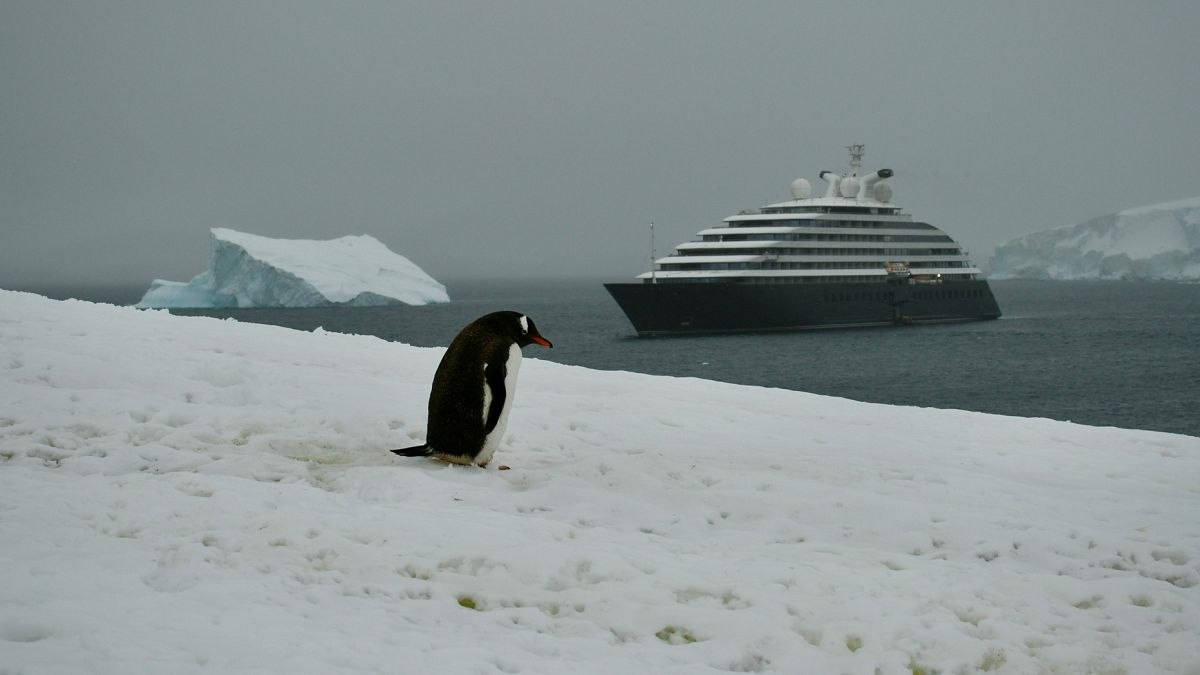Published on
Antarctica, Earth’s last great wilderness, is facing growing pressure from human activity.
A new study published in Nature Sustainability warns that surging tourism and expanding research bases are polluting the southern continent, accelerating snow melting and threatening fragile ecosystems already at risk from climate change.
Researchers from Chile, Germany and the Netherlands spent four years travelling 2,000 kilometres across Antarctica to measure contamination. They found that in areas where humans have an active presence, concentrations of toxic metals such as nickel, copper and lead are now 10 times higher than they were four decades ago.
“The increasing human presence in Antarctica raises concerns about pollutants from fossil fuel combustion, including those from ships, aircraft, vehicles and supporting infrastructure,” the authors wrote.
A rising tide of tourists
Antarctic tourism has boomed.
Fewer than 8,000 people visited annually in the 1990s. But during the 2023-24 season, there were more than 124,000, according to the International Association of Antarctica Tour Operators (IAATO), the agency that oversees tourism to the continent.
The least conservative projections suggest that this figure could reach 450,000 by 2034.
In that one season, 55 tour operators conducted nearly 570 voyages to the region. About two-thirds were passengers on smaller expedition vessels that allow landings on the continent.
In the 2024-25 season, 118,491 tourists have travelled to the region so far. More than 80,000 have set foot on Antarctic soil, and roughly 36,000 have seen it from ship decks.
Even though the IAATO enforces guidelines, from limiting shore landings to mandating biosecurity checks, visiting itself could be the problem. Previous research has shown that the average tourist trip generates 5.44 tonnes of CO2 emissions per passenger.
The physical toll of human presence
Tourism leaves more than just a carbon footprint. Scientists say visitors disturb wildlife, trample fragile flora and increase the risk of introducing invasive species and diseases.
But the most worrying impact might come from black carbon – soot produced by ship engines, aircraft and diesel generators. This darkens the snow, reducing its reflectivity and making it absorb more heat.
“Snow melts faster in Antarctica due to the presence of polluting particles in areas frequented by tourists,” said Raul Cordero, a study co-author from the University of Groningen.
“A single tourist can contribute to accelerating the melting of around 100 tons of snow.”
That impact is compounded by research expeditions, which rely on heavy vehicles and long-term camps. According to the study, a single scientific mission can have ten times more of an impact than one tourist.
Efforts to limit the damage
There have been attempts to address the problem. The Antarctic Treaty bans the use of pollutants like heavy fuel oil. Many tour companies have begun introducing hybrid electric ships. The IAATO also coordinates ship movements to avoid congestion at landing sites and enforces wildlife-watching rules.
But researchers say these measures are not enough – only a faster transition to renewable energy and cuts to fossil fuel use will address the damage.
While the icy wilderness may look untouched to tourists viewing it from a cruise ship deck, the human footprint is melting Antarctica away beneath the surface.
“Our results show that more remains to be done to reduce the burdens of human activities in Antarctica,” the study concluded.

